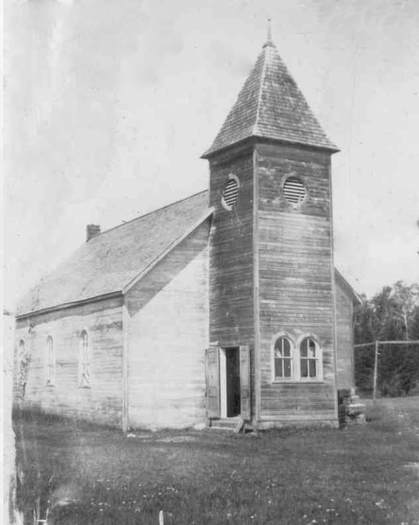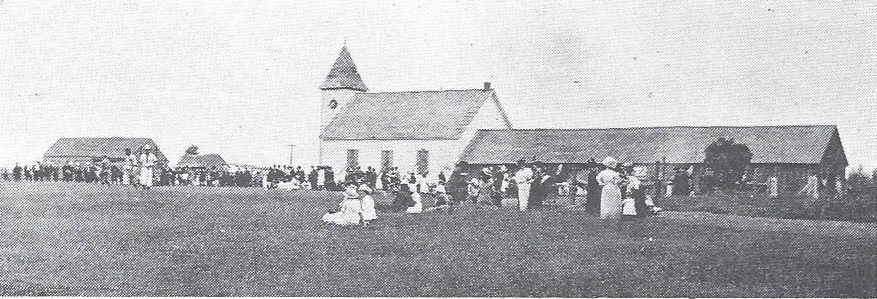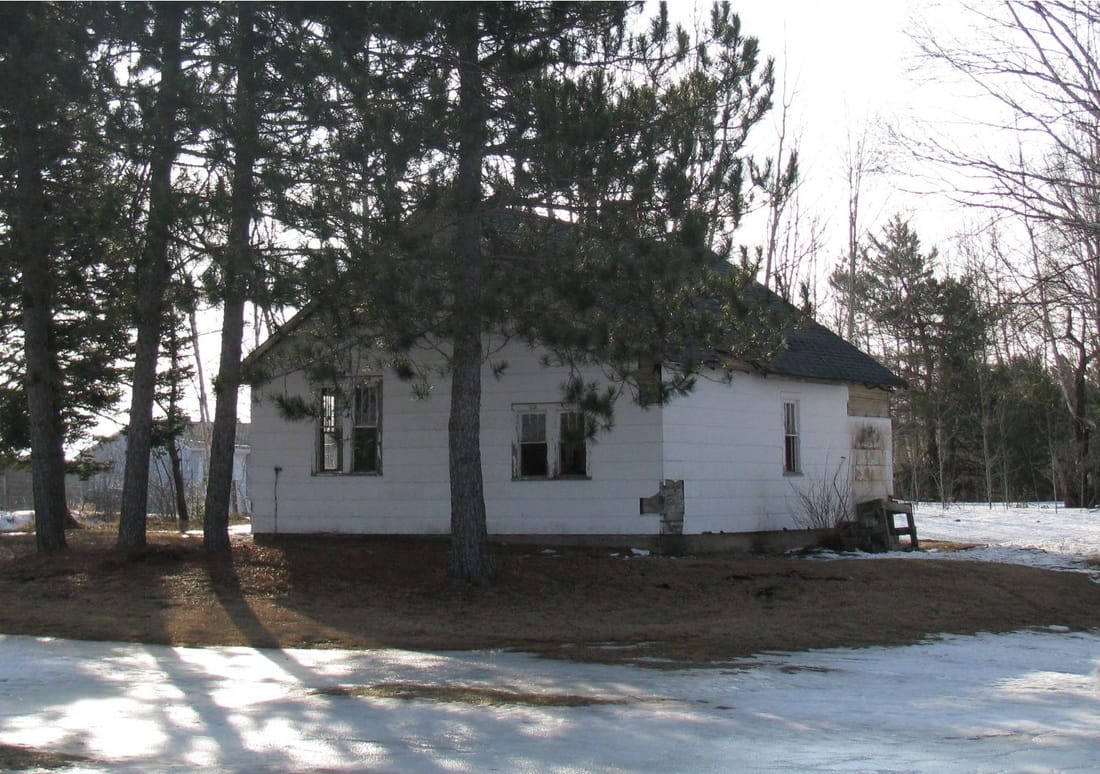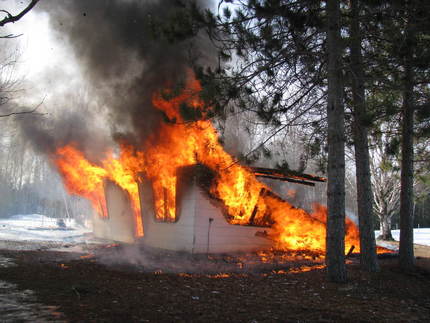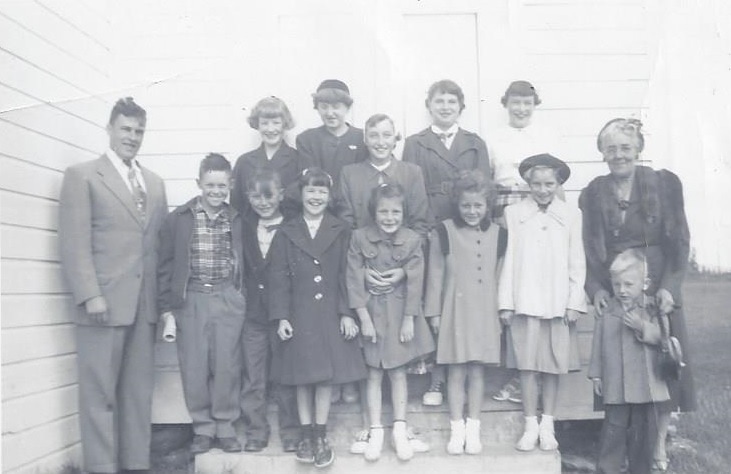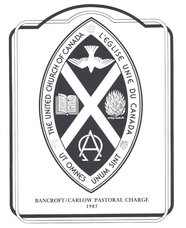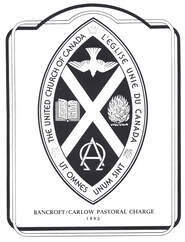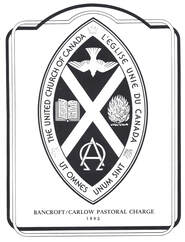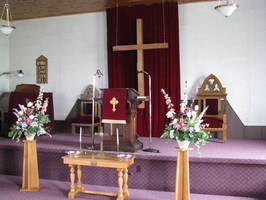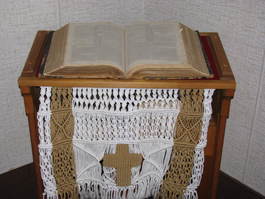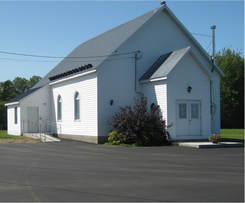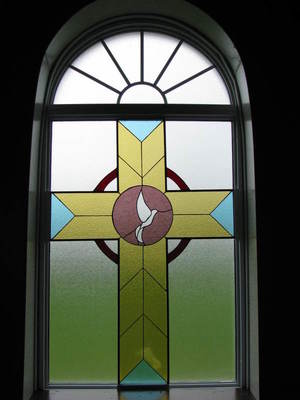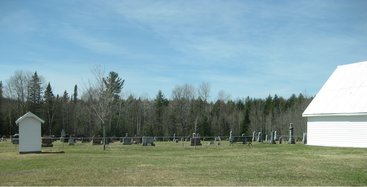HISTORY OF CARLOW UNITED CHURCH (1)
The Early Years as a Presbyterian Church – 1868 to 1925
In 1868, the Reverend Archibald Lee of the Presbyterian Church of Canada was sent by the Kingston Presbytery to minister to the whole district north of Tudor, including Carlow Township with services held in schools and private homes. Reverend Lee was followed by Reverend James Stewart.
After 1870, students were sent from Knox College to serve the area during the summer months when the area was considered a frontier mission field.
The Presbyterian congregation of Carlow Township had a burning desire to have a church building of their own.
Reverend David Wishart of Madoc negotiated the purchase of a twenty six (26) acre glebe (2) for the Carlow congregation in the winter of 1873-1874 and preparations began for a new Presbyterian church to be erected south of Boulter. Some old Township documents record that thirty (30) acres of land was given by George McAllister to the Presbytery to build the church. The Presbyterian Church of Carlow now had land on which to build their sanctuary.
The church walls were raised on July 12, 1875.
The experienced men lending their expertise to this important raising were James Wilson Sr., William Hynes, Peter Steward, John, William and Peter Stringer, William Parkhurst, Robert McLean Sr., Robert Wilson Sr., Alex Graham, James Storie, Duncan, William, and Archie Campbell, James and Sam Adrian, Sylvanus Gemmell, William Davis and George Towns.
Lumber for this building was planed by hand by Walter Whitefoot, who charged one (1) dollar for planing one thousand (1,000) feet and Thomas Wilson Sr. hewed the logs for its walls from pine felled at the top of Patterson’s Mountain. Joseph Stringer hewed the timbers for the church’s foundation. William and Taylor Young, Dave Anderson, Tom Wilson (II), Andrew Whyte, Alex Wadsworth, Alec Stewart, John Stewart, George Grant and George McAllister raised the sided pine walls, put on the roof, windows and doors and plastered the chinks and put in the floors. Blocks were sawed for seat supports and planks were used for the seats. A packing box was used for a pulpit.
Transfer of title on the land occurred in 1877 and the land has been held in trust ever since in accordance with the Ontario Religious Societies Relief Act of 1828.
A four (4) page Indenture (3) was signed and sealed on the 27th day of January 1877 and ratified by way of a Congregational meeting on the 24th day of February 1877. The original Trustees were: James Wilson, Sr., Robert McLane, Sylvanus Gemmell, Sr. and James Wilson, Jr., Secretary was James Ramsay Hamilton.
The original copy of this Indenture has survived the years and is still in possession by the Trustees of modern day Carlow United Church.
Click this link to see a copy of the original.
In 1868, the Reverend Archibald Lee of the Presbyterian Church of Canada was sent by the Kingston Presbytery to minister to the whole district north of Tudor, including Carlow Township with services held in schools and private homes. Reverend Lee was followed by Reverend James Stewart.
After 1870, students were sent from Knox College to serve the area during the summer months when the area was considered a frontier mission field.
The Presbyterian congregation of Carlow Township had a burning desire to have a church building of their own.
Reverend David Wishart of Madoc negotiated the purchase of a twenty six (26) acre glebe (2) for the Carlow congregation in the winter of 1873-1874 and preparations began for a new Presbyterian church to be erected south of Boulter. Some old Township documents record that thirty (30) acres of land was given by George McAllister to the Presbytery to build the church. The Presbyterian Church of Carlow now had land on which to build their sanctuary.
The church walls were raised on July 12, 1875.
The experienced men lending their expertise to this important raising were James Wilson Sr., William Hynes, Peter Steward, John, William and Peter Stringer, William Parkhurst, Robert McLean Sr., Robert Wilson Sr., Alex Graham, James Storie, Duncan, William, and Archie Campbell, James and Sam Adrian, Sylvanus Gemmell, William Davis and George Towns.
Lumber for this building was planed by hand by Walter Whitefoot, who charged one (1) dollar for planing one thousand (1,000) feet and Thomas Wilson Sr. hewed the logs for its walls from pine felled at the top of Patterson’s Mountain. Joseph Stringer hewed the timbers for the church’s foundation. William and Taylor Young, Dave Anderson, Tom Wilson (II), Andrew Whyte, Alex Wadsworth, Alec Stewart, John Stewart, George Grant and George McAllister raised the sided pine walls, put on the roof, windows and doors and plastered the chinks and put in the floors. Blocks were sawed for seat supports and planks were used for the seats. A packing box was used for a pulpit.
Transfer of title on the land occurred in 1877 and the land has been held in trust ever since in accordance with the Ontario Religious Societies Relief Act of 1828.
A four (4) page Indenture (3) was signed and sealed on the 27th day of January 1877 and ratified by way of a Congregational meeting on the 24th day of February 1877. The original Trustees were: James Wilson, Sr., Robert McLane, Sylvanus Gemmell, Sr. and James Wilson, Jr., Secretary was James Ramsay Hamilton.
The original copy of this Indenture has survived the years and is still in possession by the Trustees of modern day Carlow United Church.
Click this link to see a copy of the original.
|
Two (2) years after the church was constructed, the inside walls and ceiling were lathed and plastered. Seats were fabricated as well as a raised platform for the pulpit with a precentor’s (4) box in front which was filled by James Wilson Sr., who led the singing. After his retirement the precentor’s box was filled by John Brenner and after him came the Young sisters, Mary and Kate who were last to fill the office before it was removed and a choir started. An organ was installed in 1898 which accompanied the congregation’s singing for more than fifty (50) years until 1950 when Henry Stringer donated another instrument. In 1960 a piano was purchased.
The church itself was the scene of an untimely death in October 1908 when Bill Young was shingling the roof of the steeple on the entrance of the Presbyterian church. He had almost completed the job when the scaffolding gave way at its highest point plunging his body forty feet to the ground below. His neck was broken. By 1914 the Methodist Church south of Fort Stewart and the Carlow Presbyterian Church congregations agreed to amalgamate and use the Presbyterian church in Carlow. |
Pioneers of Carlow and Fort Stewart attended church regularly and a strong membership was built up. In the early days people came to church in horse drawn vehicles and some walked many miles to worship.
The date of this photo is unknown. Shown is the church with steeple and the horse shed out back.
The first organist of the church was Grace Wilson who played for service from 1898 until 1902. She was followed by Misses Ella Dale, Jennie Stringer, Isa Stringer, Etta Lavoy, Myrtle Mackey, Mrs. Henry Haryett, Laura Haryett, Lizzie Mather, Mrs. Jack Bronson, Mrs. Clifford McEatheron, Mrs. Carl Kennedy and in more recent years it was Kerry Bedard followed by Fran Downing (Valois) until she moved out of the area. Music for services was then provided by a Bose stereo system using music professionally recorded and made available by the United Church of Canada. Music is currently provided using music videos. Guest organists play for special occasions such as the Anniversary Service or Christmas Eve.
From Presbyterian to United Church of Canada – 1925 to today
In 1925 the Presbyterian, Methodist and Congregational churches amalgamated to become the United Church of Canada and the Carlow Pastoral Charge was formed, though it was originally referred to as the Fort Stewart Pastoral Charge.
The Carlow Pastoral Charge included points in Carlow and Mayo Townships, including Fort Stewart, Craigmont, Boulter, Boundary, McArthur's Mills, Hermon and New Carlow.
The early student ministers usually boarded in one of the homes in the community. Some of them had their own transportation but those who didn’t were driven by the parishioners who took turns driving them to the church services which were held in Hermon, McArthur's Mills, Craigmont, New Carlow and the home church in Boulter.
In June of 1939 the Methodist church was taken down and a dining hall built from its timbers on the now Carlow United Church grounds. Its seats were utilized in the Carlow church.
About 1944 the congregation decided that they should build a manse. Preparation began and with much hard work, many donations and with a loan from the bank, the manse was built. Boyd Beckel, his wife Edith and their infant daughter were its first occupants. All of the student ministers that came to Carlow United Church lived there during the summer months. At some point, the manse ceased to be used and repairs were not kept up. There was no longer a purpose for the manse and the most cost effective way to remove it was to burn it down. On March 7, 2009, Trustees of the church burned the manse to the ground and buried its remains in a hole on site.
From Presbyterian to United Church of Canada – 1925 to today
In 1925 the Presbyterian, Methodist and Congregational churches amalgamated to become the United Church of Canada and the Carlow Pastoral Charge was formed, though it was originally referred to as the Fort Stewart Pastoral Charge.
The Carlow Pastoral Charge included points in Carlow and Mayo Townships, including Fort Stewart, Craigmont, Boulter, Boundary, McArthur's Mills, Hermon and New Carlow.
The early student ministers usually boarded in one of the homes in the community. Some of them had their own transportation but those who didn’t were driven by the parishioners who took turns driving them to the church services which were held in Hermon, McArthur's Mills, Craigmont, New Carlow and the home church in Boulter.
In June of 1939 the Methodist church was taken down and a dining hall built from its timbers on the now Carlow United Church grounds. Its seats were utilized in the Carlow church.
About 1944 the congregation decided that they should build a manse. Preparation began and with much hard work, many donations and with a loan from the bank, the manse was built. Boyd Beckel, his wife Edith and their infant daughter were its first occupants. All of the student ministers that came to Carlow United Church lived there during the summer months. At some point, the manse ceased to be used and repairs were not kept up. There was no longer a purpose for the manse and the most cost effective way to remove it was to burn it down. On March 7, 2009, Trustees of the church burned the manse to the ground and buried its remains in a hole on site.
For many years a picnic was one of the highlights of the social activities at the church. There was always keen competition in the baseball games, races and horse shoe pitching. Ice cream was made in hand turned freezers and along with large cans of lemonade was for sale in the booth. The highlight of the meals (usually there were two) was the baking of beans in the sand. The beans were cooked in a large kettle then placed in bake kettles. Salt pork, sugar, salt, pepper and lard were added, then the kettles were put into a heated pit, covered with hot sand and baked for hours. Beef and potatoes were cooked in large kettles over an open fire. Salads, homemade bread and buns, cookies and pies were plentiful at these meals. We note that at a picnic in June 1941 the meal tickets were $0.35 for adults and $0.25 for children.
This community tradition continues today but in a slightly different way with the annual Ham and Turkey Fall Supper, “Pot Luck” meal following the annual Walk-A-Thon and refreshments served after the annual Remembrance Day services at the Cenotaph.
Over the years, improvements have been made to the church, including a lowered knotty pine ceiling, electric lights, a furnace, wall to wall carpet and stained glass windows. The plank seats were replaced by pews made by members as well as those from the Methodist church.
The original high steeple was taken down. The shed at the west side of the church which provided shelter for the horses in the early years and in later years was used as a dining area for picnics has been torn down. A frame building which was erected in the same spot and used for a booth was torn down in 1974. The dining hall which was partly built from material taken from the Methodist Church on Boundary line has been a great asset. This building has been used for Sunday School classes, suppers, meetings, wedding dinners, quilting bees etc.
The original log walls received wood siding and later vinyl siding. In 2007 an annex was added to the south side of the church to give the church its first in-door plumbing. Up until then, the only washroom facility was an outhouse, which still stands and is used today. In 2016, a concrete wheelchair access ramp was added to the annex and the washroom renovated to make the building and washroom handicap accessible.
In the beginning as part of the Kingston Presbytery, Carlow has been connected with charges at Palmer Rapids, Maynooth and finally Bancroft where in 1969 it was made part of the five point Bancroft/Carlow Pastoral Charge, which included Baptiste, Bancroft, L’Amable, Hermon and Carlow. Today Baptiste operates from Father’s Day to Labour Day weekend, L’Amable operates on a special occasion basis and Hermon is closed completely.
On January 1, 2023, Carlow United Church separated from the Bancroft/Carlow Pastoral Charge and operates as the Carlow Pastoral Charge, an independent member of the United Church of Canada.
HISTORICAL PHOTOS
1953 Carlow United Church Bible School
1954 Sunday School Class
Back Row Left to Right - Wanda O’Connor, Doreen Fleegal, Faye Wasmund, Elva Wilson
Centre Row – Donna Wilson
Front Row Left to Right - Rev. Eldon Hay, Gerald Foster, Gary Inwood, Sherry O’Connor, Marlene Wilson, Jackie Wilson, Jeane Trolley, Reta Allison, Brysen Inwood
Centre Row – Donna Wilson
Front Row Left to Right - Rev. Eldon Hay, Gerald Foster, Gary Inwood, Sherry O’Connor, Marlene Wilson, Jackie Wilson, Jeane Trolley, Reta Allison, Brysen Inwood
1954 Kindergarten Sunday School Class
Left to Right - Marlene Wilson, Ken Trolley, Marilyn Trolley, Brysen Inwood, Teacher - Elva Wilson
Carlow United Church 1977 (Credit: Ken Wilson Collection)
1985 Church Directory
Click the image below to see the complete 1985 Carlow United Church Directory
Click the image below to see the complete 1985 Carlow United Church Directory
1993 Church Directory
Click the image below to see the complete 1993 Carlow United Church Directory
Click the image below to see the complete 1993 Carlow United Church Directory
2008 Church Directory
Click the image below to see the complete 2008 Carlow United Church Directory
Click the image below to see the complete 2008 Carlow United Church Directory
2018 Church Directory
Click the image below to see the complete 2018 Carlow United Church Directory
Click the image below to see the complete 2018 Carlow United Church Directory
Carlow United Church is an active and vibrant member of the community conducting worship services and hosting weddings, funerals, community dinners, Remembrance Day Service at the Township Cenotaph on its grounds and providing a meeting place for such organizations as the Carlow White Church Cemetery Board and the United Church Women.
|
Carlow Township Cenotaph
Carlow Township erected a Cenotaph on the grounds of the Carlow United Church and on August 18, 1984 dedicated it to those Carlow Township citizens who fought in World War I, World War II and the Korean War. Erection of the Cenotaph was the Bicentennial project of the township lead by Reeve Ken Wilson. A committee made up of Jean Loney, Laurie Trolley, Thora Hass and Ken Wilson was established to make preparations for the memorial. Thirty eight (38) WW I veterans are on the plaque. One of those, Bill Ruddy was present for the ceremony. Sixty (60) WW II veterans are on the plaque and twenty three (23) were present for the ceremony. Four (4) Korean War veterans are on the plaque and three (3) were present for the ceremony. Rev. Jack Roundell delivered the invocation prayer and Rev. Peter Tink pronounced the dedication. This cenotaph is used each year for November 11th Remembrance Day Services. Carlow White Church Cemetery
Long ago a shanty stood in the clearing beside the site of the Carlow church. It was the home of Mr. and Mrs. Robert Grant and when their baby died in 1867 they buried it behind their home. This baby became the first to be buried in a cemetery which now numbers hundreds of graves. The earliest adult grave was that of Jane Wilson (1839-1869), who was the mother of Rev. Alec Stewart. The first map of the cemetery was burned so a second was prepared from memory. There are tombstones dating from the 1860’s but many of the older graves are now unmarked. |
|
(1) Portions of this history are excerpts taken from “Before The Memories Fade,” originally written and published in 1977 by the senior citizens of Carlow Township. Copies of this excellent book are available today from the Township of Carlow / Mayo (http://www.carlowmayo.ca/).
(2) a piece of land serving as part of a clergyman's benefice and providing income
(3) a legal contract that reflects or covers a debt or purchase obligation. It specifically refers to an instrument used for commercial debt or real estate transaction.
(4) a person who leads a congregation in its singing or prayers.
(2) a piece of land serving as part of a clergyman's benefice and providing income
(3) a legal contract that reflects or covers a debt or purchase obligation. It specifically refers to an instrument used for commercial debt or real estate transaction.
(4) a person who leads a congregation in its singing or prayers.
